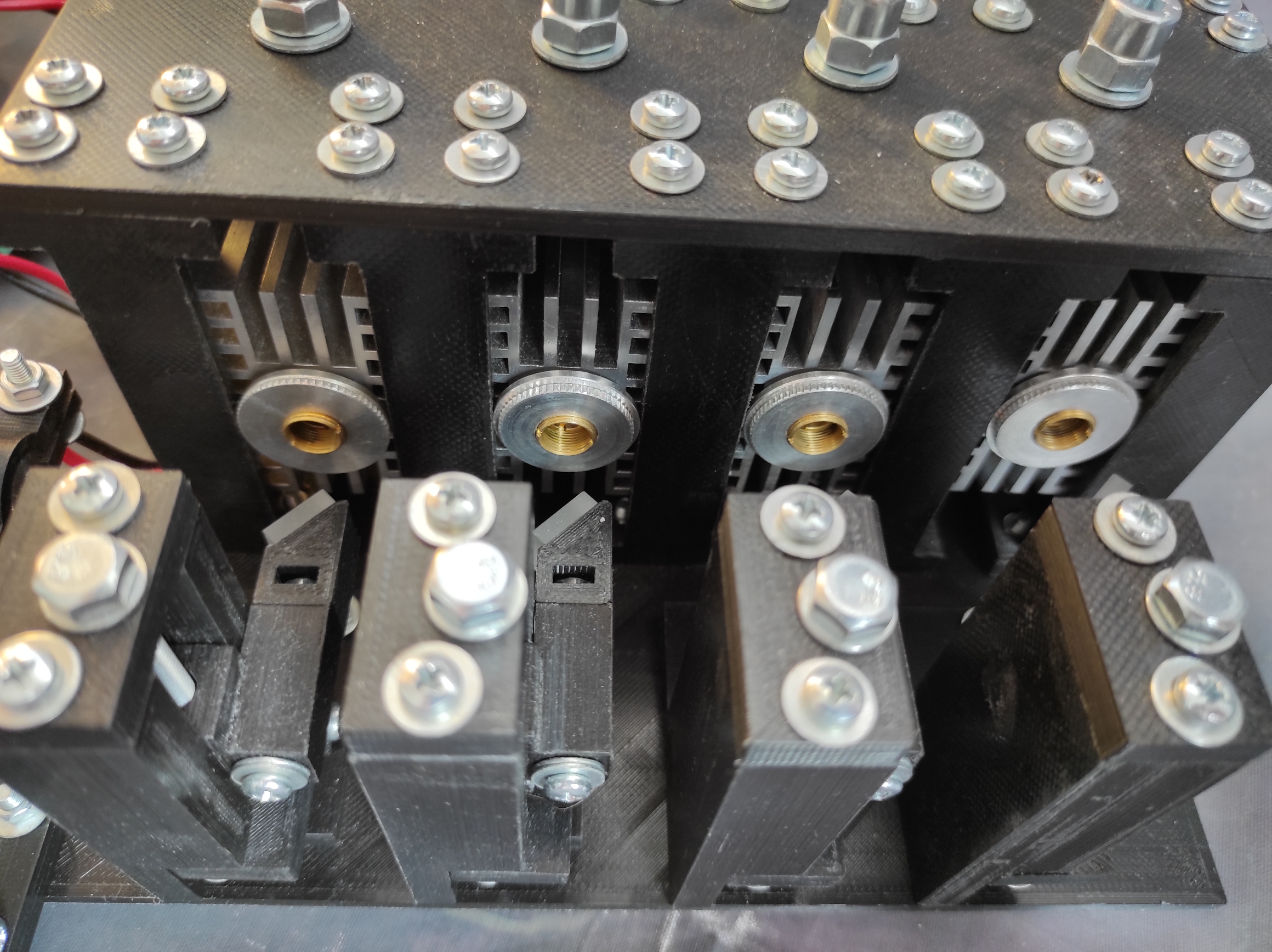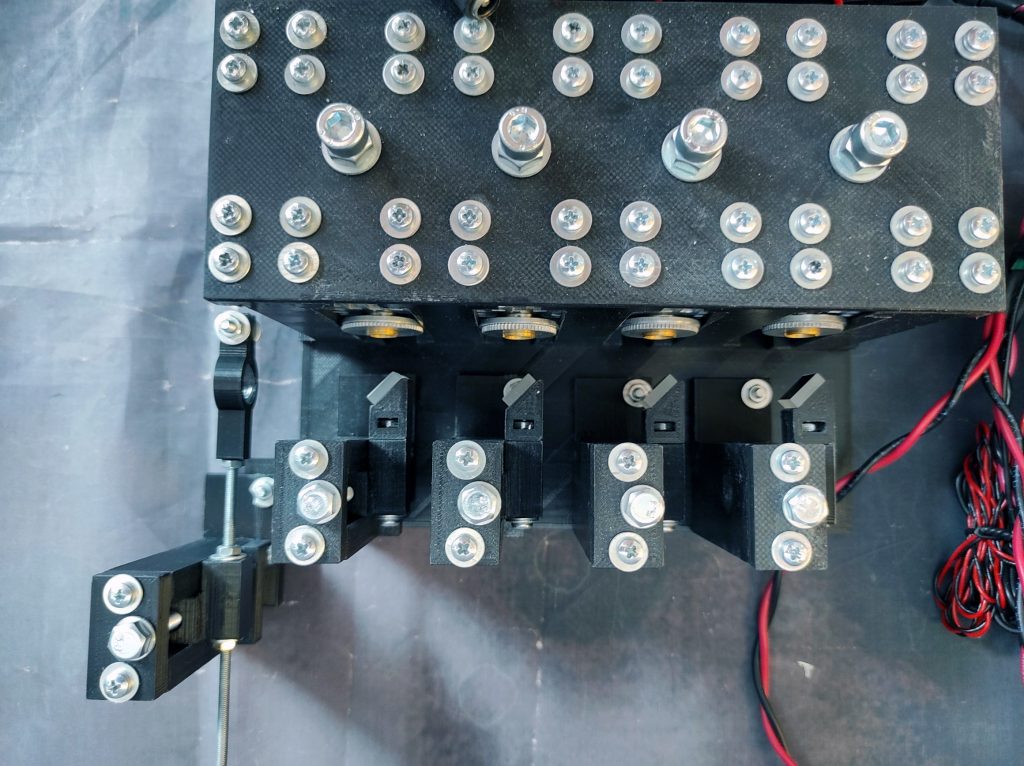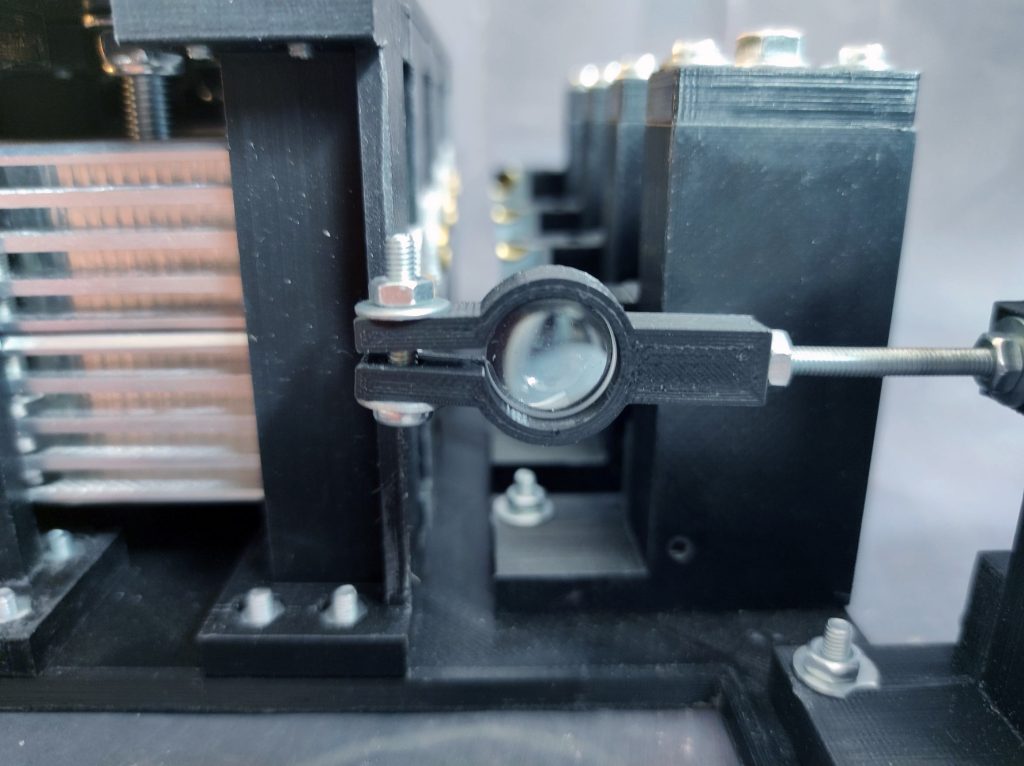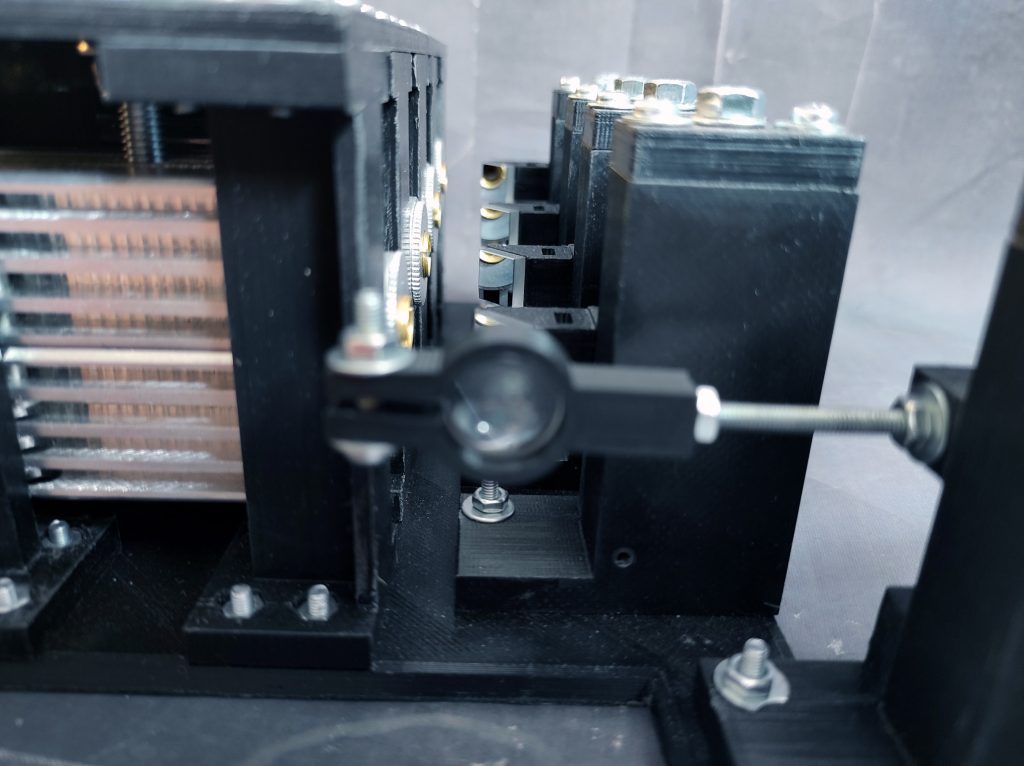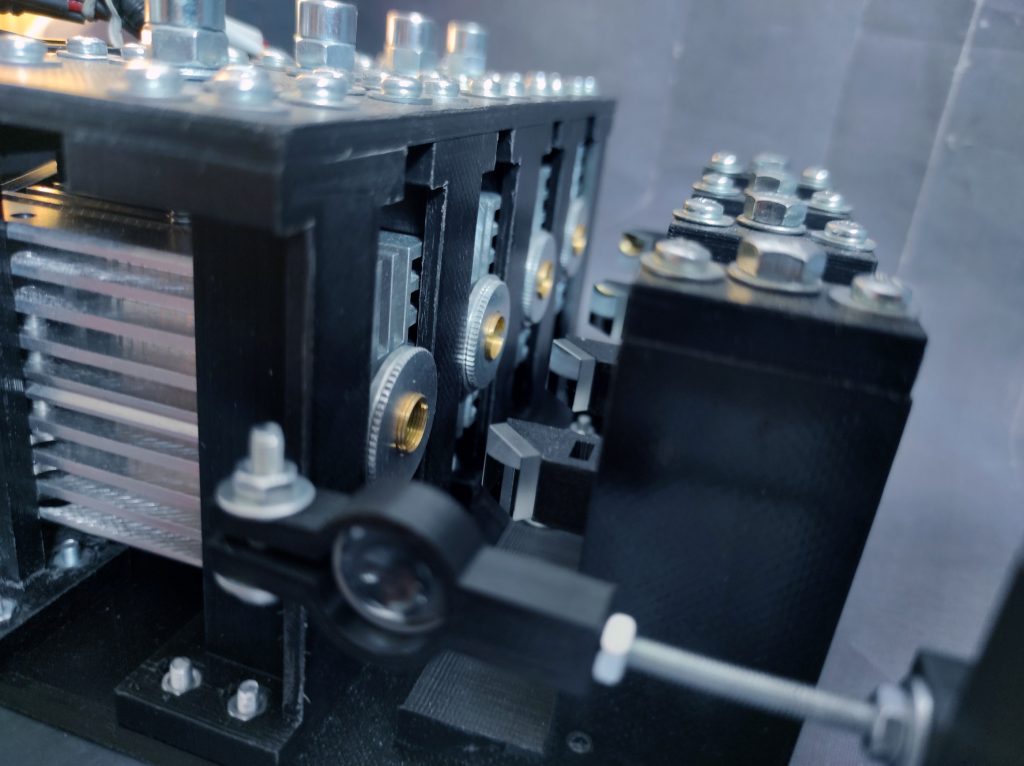Endurance lasers start to work on 30 / 40 / 50-watt laser modules with high laser beam spot focal depth.
REAL LASER POWER OUTPUT.
Experimenting with laser cutting I paid attention to the fact that it’s the slow axis that limits us. In other words, it does not matter how fast you are cutting along the fast axis (if it’s not about cutting straight lines), but when doing any shape cutting will have the spot size limit along the slow axis. Since we have a slow axis quality problem, it’s senseless to use a single diode because the spot size along the slow axis time and again exceeds the size of that along the fast axis, and the focal depth along the slow axis is manyfold less than that along the fast axis.
This is the reason why I consider it important to evaluate the practicability of two beams combining in one using a polarizing prism and its focusing with a diode set consisting of 3-6-9-12 items and directing the plane-parallel beams to one focusing lens. In this case, a focal depth of 5-10 mm or so is well enough, which corresponds to the strip of 12-20 µm in size along the fast axis. The strip size along the slow axis is not important in this respect since the focal depth along the slow axis will not be more than 0.2-0.3 mm, which is not important in practice.
It’s the power density and focal depth along the fast axis, this is what matters since beam overlapping at 0 + 90 + 45 + 22,5 + 11,25 etc. angles will provide maximum power density and focal length along the fast axis.
The ideal power density for plywood cutting is 50-100 kW/cm², but this power density by itself means nothing if the rated (available) power is less.
Notice
In other words, if you have a 70х5 µm beam, a power density of 1 MW/cm², and a diode power of 5.9 W, your laser will cut plywood worse than the one with a beam of 250х15 µm in size, the density of 150 kW/cm², and the diode power of 7.5W.
In this regard, it can be postulated that the power density in the range of 50-100 kW/cm² is more than enough, but it is necessary to have a large focus and increased rated power due to the imposition of one beam on another like a snowflake.
